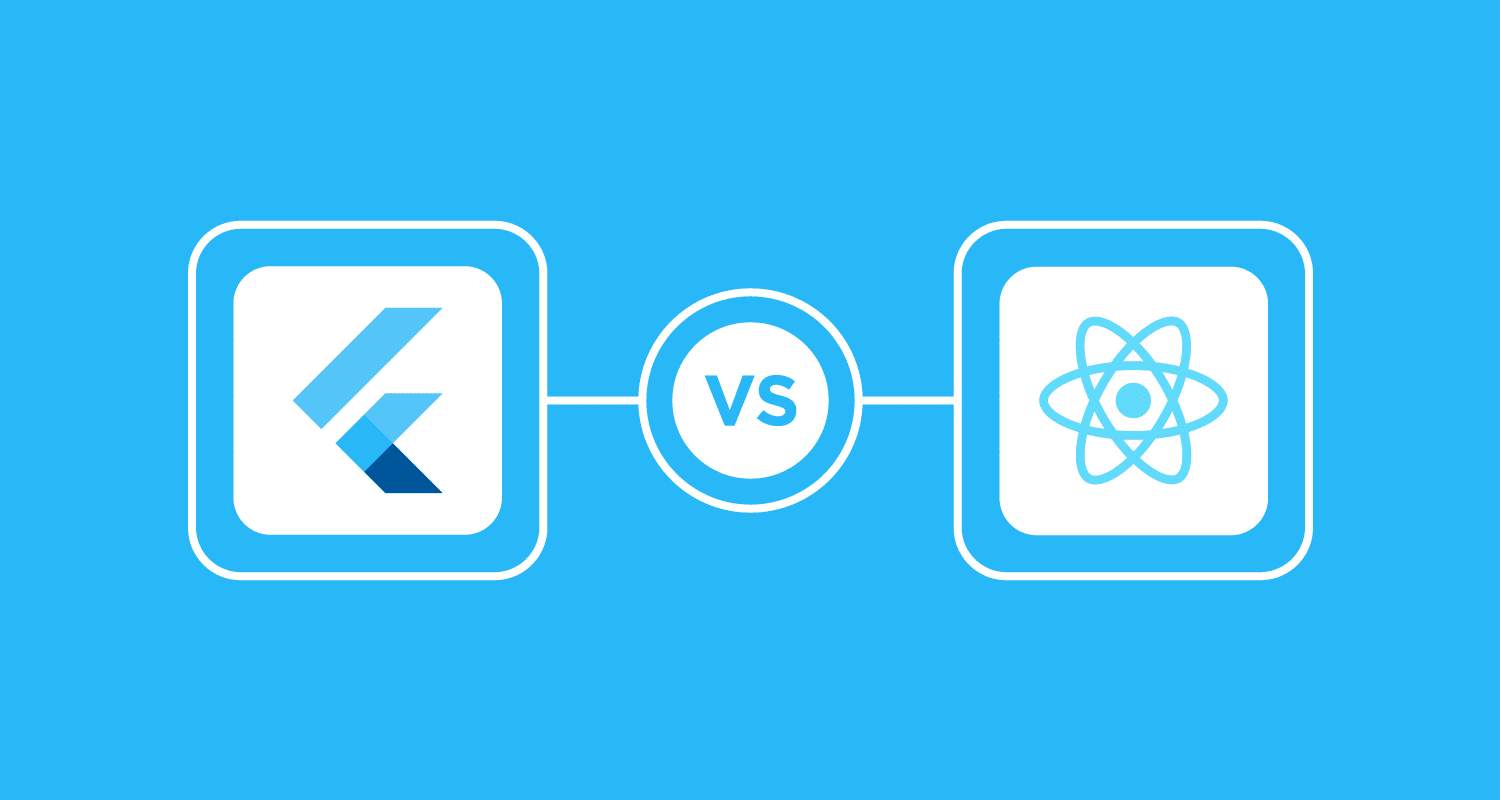In the rapidly evolving world of mobile app development, cross-platform frameworks have gained significant popularity due to their ability to create applications that run seamlessly on multiple platforms. Two prominent contenders in this space are Flutter and ReactJS. Both frameworks offer unique features and advantages, making them popular choices among developers. In this article, we will compare Flutter and ReactJS for cross-platform app development, highlighting their key differences and strengths.
What is Flutter?
Flutter is an open-source UI software development kit (SDK) developed by Google. It allows developers to build natively compiled applications for mobile, web, and desktop from a single codebase. Flutter uses the Dart programming language and provides a rich set of pre-designed widgets for creating visually appealing user interfaces. It offers a hot reload, which allows developers to see changes in real time, speeding up the development process.
Flutter App Development
Flutter app development refers to the process of creating applications using the Flutter framework. With Flutter, developers can write code once and deploy it on multiple platforms, including iOS, Android, web, and desktop. Flutter provides a wide range of customizable widgets that enable developers to create beautiful and responsive user interfaces. The framework also offers hot reload, allowing developers to make changes to the code and see the updates instantly without losing the app’s state.
What is ReactJS?
ReactJS, also known as React, is a JavaScript library developed by Facebook. It is primarily used for building user interfaces, especially for single-page applications. ReactJS follows a component-based architecture, where the UI is divided into reusable components. It uses a virtual DOM (Document Object Model) for efficient rendering and updates only the necessary components when changes occur. ReactJS is widely adopted and has strong community support.
ReactJS Development
ReactJS development involves using the React library to build interactive and dynamic user interfaces. With ReactJS, developers can break down the UI into reusable components, making the code more modular and maintainable. ReactJS uses JSX, a syntax extension for JavaScript, which allows developers to write HTML-like code within JavaScript. ReactJS applications can be developed for web platforms and can be combined with other libraries or frameworks to create more complex applications.
Pros and Cons of Flutter
Pros
- Fast and Performant: Flutter utilizes a compiled programming language (Dart) that directly interfaces with the device’s hardware, resulting in fast and performant applications.
- Hot Reload: Flutter’s hot reload feature allows developers to experiment, iterate, and fix issues in real-time, reducing development time and providing a smooth development experience.
- Single Codebase: Flutter allows developers to write a single codebase that can be deployed on multiple platforms, saving time and effort in maintaining separate codebases for each platform.
- Rich and Customizable Widgets: Flutter offers a wide range of customizable widgets, allowing developers to create stunning user interfaces with ease.
- Strong Community: Flutter has a growing and active community that provides support, resources, and plugins, facilitating faster development and problem-solving.
Cons
- Limited Native Functionality: Flutter, being a cross-platform framework, may have limitations in accessing certain platform-specific features or APIs, requiring additional workarounds.
- Learning Curve: Flutter uses Dart, which may require developers to learn a new programming language if they are not already familiar with it.
- Ecosystem Maturity: Although Flutter’s ecosystem is rapidly growing, it may still lack some mature libraries or tools compared to more established frameworks.
Pros and Cons of ReactJS
Pros
- Virtual DOM: ReactJS’s virtual DOM efficiently updates only the necessary components, resulting in better performance and faster rendering.
- Component-Based Architecture: ReactJS follows a component-based architecture, making it easier to build and maintain complex UI structures by reusing components.
- Large Community: ReactJS has a large and active community that provides extensive resources, tutorials, and third-party libraries, making development easier and problem-solving faster.
- SEO-Friendly: ReactJS provides server-side rendering capabilities, making it more SEO-friendly compared to purely client-side rendered applications.
Cons
- JavaScript Dependency: ReactJS heavily relies on JavaScript, so developers must have a good understanding of JavaScript concepts and practices.
- Lack of Native Capabilities: ReactJS, being a JavaScript library, may require additional workarounds or third-party libraries to access platform-specific functionalities.
- Steeper Learning Curve for Beginners: ReactJS’s component-based architecture and JSX syntax may have a steeper learning curve for developers new to the framework.
Performance and Speed
When it comes to performance and speed, both Flutter and ReactJS have their strengths. Flutter’s compiled Dart code allows it to directly interact with the device’s hardware, resulting in fast and smooth animations. ReactJS, on the other hand, utilizes its virtual DOM and efficient diffing algorithm to optimize rendering, ensuring optimal performance.
User Interface Development
Flutter provides a rich set of pre-designed widgets that can be customized to create visually appealing and responsive user interfaces. It offers a wide range of Material Design and Cupertino-style widgets for Android and iOS respectively. ReactJS, on the other hand, relies on JavaScript and CSS for UI development. It provides JSX, a syntax extension for JavaScript, which allows developers to write HTML-like code within JavaScript.
Development and Learning Curve
Flutter uses Dart, a modern and object-oriented programming language. Developers familiar with languages like Java or C# will find it relatively easy to pick up Dart. However, developers new to Dart may experience a learning curve initially. ReactJS, on the other hand, uses JavaScript, which is widely known and has a large developer community. Therefore developers with JavaScript experience will find it easier to start with ReactJS.
Community Support and Resources
Both Flutter and ReactJS have active and supportive communities. Flutter’s community is rapidly growing, with a vast number of plugins, packages, and resources available. ReactJS has a larger community due to its longer existence, offering extensive documentation, tutorials, and third-party libraries.
Testing Capabilities
Flutter provides a robust testing framework called Flutter Testing, which allows developers to write unit, integration, and widget tests. It provides tools and APIs for testing UI interactions and business logic. ReactJS has a variety of testing frameworks available, including Jest and Enzyme, which allow developers to write unit tests and test React components.
Integration with Native Code
Flutter provides excellent integration with native code through platform channels. Developers can access platform-specific APIs and functionalities by writing native code snippets in Kotlin, Swift, or Objective-C. ReactJS, being a JavaScript library, can also be integrated with native code using third-party libraries and modules.
Third-Party Library Support
Both Flutter and ReactJS have a wide range of third-party libraries and packages available. Flutter’s package repository, called Pub, hosts a growing number of packages for various functionalities. ReactJS has the advantage of being built on JavaScript, which has an extensive ecosystem of libraries and frameworks.
Ecosystem and Tooling
Flutter has a growing ecosystem of tools and IDE support. It provides its own integrated development environment (IDE) called Flutter Studio, as well as plugins for popular editors like Visual Studio Code. ReactJS benefits from a mature ecosystem and has a wide range of development tools, including React Developer Tools, which enable developers to inspect and debug React components.
Popularity and Industry Adoption
Both Flutter and ReactJS have gained significant popularity and are widely adopted by the industry. Flutter, with its strong backing from Google, has gained traction in the mobile app development community. ReactJS, being developed by Facebook, has a large user base and is extensively used for building user interfaces in web applications.
Choosing the Right Framework
When choosing between Flutter and ReactJS for cross-platform app development, several factors need to be considered. Therefore the decision depends on the specific project requirements, the development team’s skill set, and the desired performance and user experience. It is essential to evaluate the strengths and limitations of each framework and consider factors such as UI development, performance, community support, testing capabilities, and integration with native code.
Conclusion
Both Flutter and ReactJS are powerful frameworks for cross-platform app development. Hence flutter offers a fast and performant development experience with its hot reload feature and customizable widgets. ReactJS, on the other hand, provides efficient rendering through its virtual DOM and has strong community support. Therefore choosing between the two frameworks depends on the project requirements and the developer’s familiarity with programming languages and tools. Therefore evaluating the strengths and weaknesses of each framework will help in making an informed decision for successful cross-platform app development.
Read More:https://getamagazines.com/












